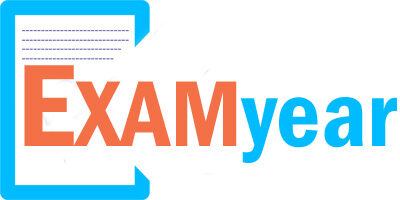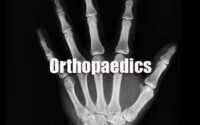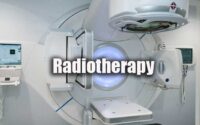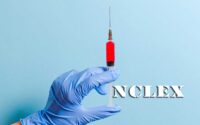Psychiatry Questions and Answers
Psychiatry Questions and Answers paper for the written examination is given below. Candidates who are looking for Psychiatry exam Questions and Answers paper can find in this section. The applied candidates who are getting prepared for the Psychiatry can view this page for the Psychiatry Last Ten Years Questions and Answers Papers.
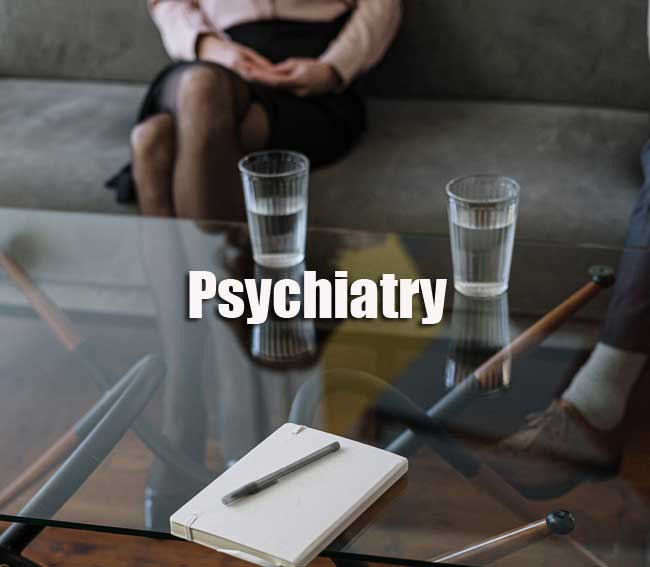
Download the Psychiatry Questions and Answers & Solutions & make it as a reference for your exam preparation. Take advantage of these Psychiatry Questions and Answers Papers in a proper manner to get qualifying Marks. Last 5 years Psychiatry Questions and Answers Papers provided here. Candidates who are applied for the above exam can check and download the Psychiatry Questions and Answers Papers from here.
Questions and Answers on Psychiatry
1. In Delirium tremens intravenous lorazepam is used in doses of
(1) 0.5 mg/kg of 2.0 mg/min
(2) 0.1 mg/kg of 2.0 mg/min
(3) 0.1 mg/kg of 1.0 mg/min
(4) 0.5 mg/kg of 1.0 mg/min
2. Cannabis intoxication includes
(1) Dry mouth
(2) Bradycardia
(3) Poor appetite
(4) None of the above
3. Kurt Schneiders first rank symptoms criteria for schizophrenia does not include
(1) Voices Arguing or Discussing or Both
(2) Voice Commentary
(3) Despondency
(4) Delusional Perception
4. Maximum Prevalence of Schizophrenia is seen in
(1) Di Zygotic Twin of a Schizophrenia Patient
(2) Child with one parent Schizoaffective disorder
(3) Mono Zygotic twin of a Schizophrenia Patient
(4) Non-Twin Sibling of a Schizophrenia Patient
5. Delusional Disorder does not include following subtypes in ICD-10 criteria
(1) Self-Referential Type
(2) Somatic Type a
(3) Litigious Type
(4) Manic Type
6. If patient is receiving Oral Olanzapine 10 mg per day, then loading dose of long acting Olanzapine will be —
(1) 300 mg every 02 weeks
(2) 200 mg every 02 weeks
(3) 210 mg every 02 weeks
(4) 315 mg every 02 weeks
7. Non Bizzare delusions are usually seen in
(1) Obsessive compulsive disorder
(2) Delusional disorder
(3) Social phobia
(4) Somatization disorder
8. Good progress in Schizophrenia is associated with
(1) Young onset
(2) Insidious onset
(3) Late onset
(4) No precipitating factors
9. In Evoked potential studies abnormalities of P300 wave in Schizophrenia is
(1) Smaller than that in comparison groups
(2) Larger than that in comparison group
(3) Smaller early evoked potential
(4) Larger late evoked potential
10. Following is true for schizophrenia except
(1) In ICD 10 minimum duration of criteria for diagnosis of schizophrenia is one month
(2) Substance P and neurotensin are neurotransmitters involved in schizophrenia
(3) Schizoaffective disorder is subtype of schizophrenia
(4) Type 2 schizophrenia predominantly have negative symptoms
11. Declarambault’s syndrome is
(1) Delusional disorder erotomaniac type
(2) Delusional disorder jealous type
(3) Delusions of doubles
(4) Delusional disorder persecutory type
12. In Schizophrenia following is true except
(1) Loss of GAB Aergic neurones in hippocampus
(2) Neuronal loss in thalamus
(3) Reduction of volume of Globus pallidus
(4) Reduced symmetry in_ parietal lobes.
13. Lifetime prevalence rates of bipolar disorder is
(1) 0 to 2.4%
(2) 3.22 to 4%
(3) 5 to 6%
(4) More than 7%
14. Bipolar disorder is more common in
(1) Married and employed
(2) Divorced and single person
(3) Unemployed and married
(4) Unmarried and unemployed
15. Depression is associated with
(1) Increased phasic rapid’ eye movements
(2) Decreased core body temperature
(3) Decreased nocturnal arousal
(4) None of the above
16. Evidence of linkage in bipolar disorder in is in following chromosomal regions
(1) Chromosome 10
(2) Chromosome 11
(3) Chromosome 16
(4) Chromosome 18
17. Concordance rate for mood disorder is in same sex dizygotic (DZ) twins is
(1) 70-90%
(2) 16-35%
(3) 7-10%
(4) Less than 60%
18. Patient who commit suicide during depressive episode are
(1) Less than 5%
(2) 10 to 15%
(3) 20 to 25%
(4) More than 30%
19. Manic episode in Bipolar Disorder-1 in DSM-S5 requires
(1) Distinct period of elevated mood for at least one week
(2) Inflated self-esteem decreased need of sleep
(3) More talkative than usual, Flight of ideas
(4) All of the above
20. In major depressive disorder
(1) Untreated episode of depression last for 06 to 13 months
(2) Treated episode lasts for 03 months
(3) Mean number of episodes is 05 to 06
(4) All of the above
| Practice Set | MCQs |
| Quiz | Questions and Answers |
21. Antidepressant which are only NE reuptake inhibitors are
(1) Protriptyline
(2) Amitriptyline
(3) Imipramine
(4) Trimipramine
22. Dysthymic disorder in general population affects
(1) 1% to 2%
(2) 3% to 4%
(3) 5% to 6%
(4) 7% to 8%
23. To diagnose cyclothymic disorder in children and adolescent duration required for presence of depressive and hypomanic symptoms
(1) 03 Months
(2) 06 Months
(3) 12 Months
(4) 24 Months
24. A 30-year-old manic patient was prescribed haloperidol one week back develops restlessness, pacing in room also having tremors is most likely suffering from
(1) Anhedonia
(2) Dystonia
(3) Restless leg syndrome
(4) Akathisia
25. A bipolar disorder patient getting repeated episodes of mania and depression due to poor compliance the psychotherapy of choice would be
(1) Cognitive behavioural therapy
(2) Psychoeducation
(3) Insight oriented therapy
(4) Supportive psychotherapy
26. Features of mania includes
(1) Hypochondriac delusion
(2) Delusion of guilt
(3) Delusion of persecution
(4) Delusion of enormity
27. All of the following is seen in Serotonin syndrome except
(1) Ataxia
(2) Tremors
(3) Hypothermia
(4) Myoclonus
28. Side effects of TCA include
(1) Tremors
(2) Weight loss
(3) Diarrhoea
(4) Gynecomastia
29. Sexual Response cycle does not have following phase
(1) Excitement
(2) Sensation
(3) Orgasm
(4) Resolution
30. Sexual pain disorder includes
(1) Dyspareunia
(2) Vaginismus
(3) Penetration Disorder
(4) All of the above
31. Paraphilias does not includes
(1) Vaginismus
(2) Fethism
(3) Paedophilia
(4) Frotteurism
32. Following drugs is not used to treat sexual dysfunction
(1) Yohimbine
(2) Asprgil
(3) Selegiline
(4) Vardenafil
33. Unpredictable behaviour repetitive self-destructive behaviour, tumultuous interpersonal relationship is seen in
(1) Obsessive compulsive personality disorder
(2) Histrionic personality disorder
(3) Borderline personality disorder
(4) Schizoid personality disorder
34. Paranoid personality disorder patients-
(1) Easily confide in others
(2) Are relaxed and humorous
(3) Are excessively suspiciousness
(4) Does not react quickly
35. Cluster (C) type personality disorder includes
(1) Dependent type
(2) Histrionic type
(3) Anti-social type
(4) Borderline type
36. Schizoid personality disorder patient
(1) Express anger directly
(2) Has little interest in sexual life
(3) Show involvement in everyday activities
(4) Are non-competitive in nature
37. Ambulatory schizophrenia refers to
(1) Type of personality disorder
(2) Type of neurosis
(3) Emotional stable personality disorder
(4) Brief psychotic illnesses
38. Following skills is not the part of stress management skills
(1) Self-Alertness
(2) Relaxation Training
(3) Problem Solving
(4) Time Management
39. Type-A Behaviour pattern is related to CAD related mortality
(1) 2 Times
(2) 2.5 Times
(3) 3 Times
(4) 3.5 Times
40. An 18-year-old boy presented with belief that his penis is retracting in the abdomen and he will die when it retracts completely is suffering from
(1) Dhat syndrome
(2) Koro
(3) Latah
(4) Loto’s syndrome
41. Which of the following is not a part of Kubler-Ross’s stages of impending death ?
(1) Depression
(2) Bargain
(3) Aggression
(4) Anger
42. A 7-year old boy does not like to eat green vegetables mother would offer him his favourite sweet to encourage green vegetable intake such a type of behaviour change is based on
(1) Classical conditioning
(2) Operant conditioning
(3) Social learning
(4) Coping strategy
43. When man is asked to recall A painful episodes from childhood cries ‘No, don’t remember and I don’t want to remember’ suggested defence mechanism could be
(1) Projection
(2) Denial
(3) Repression
(4) Distortion
44. Achronic alcoholic blaming his family environment for his habit of alcoholism the suggested defence mechanism is —
(1) Denial
(2) Projection
(3) Rationalization
(4) Compensation
45. On hearing the sound of tap water, a patient experiences hearing of voices scolding him. This phenomenon is known as —
(1) Reflex hallucination
(2) Functional hallucination
(3) Second person auditory hallucination
(4) Passive hallucinations
